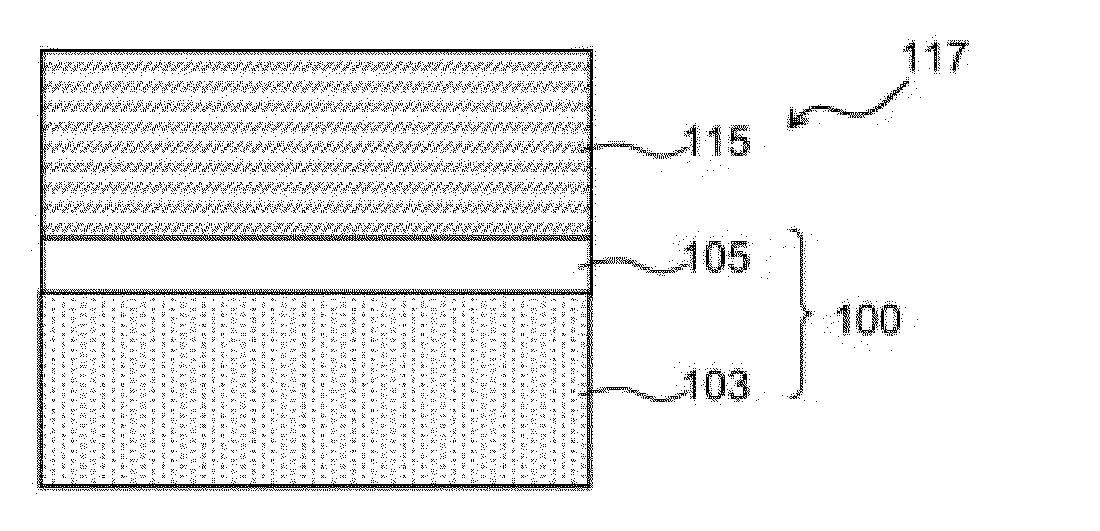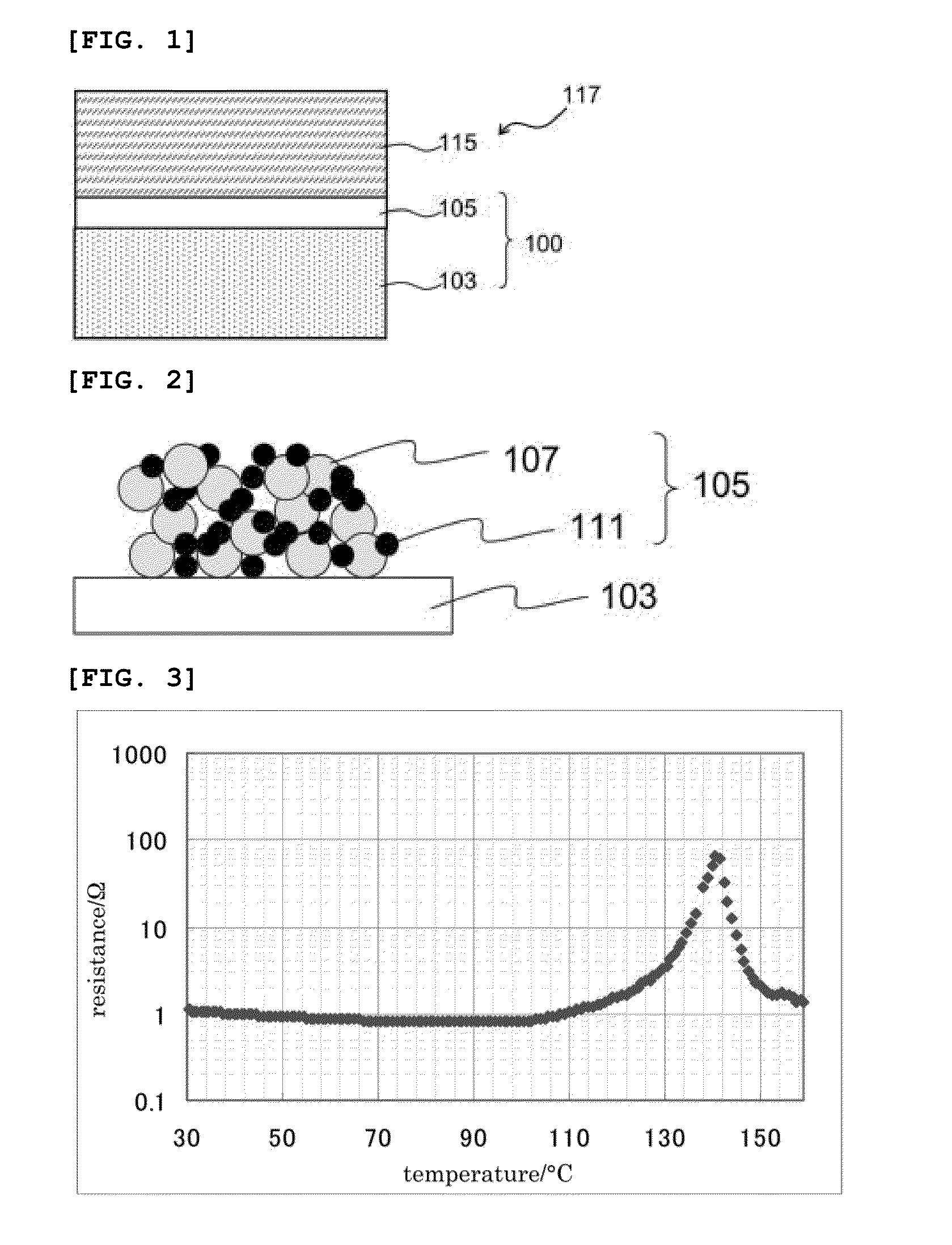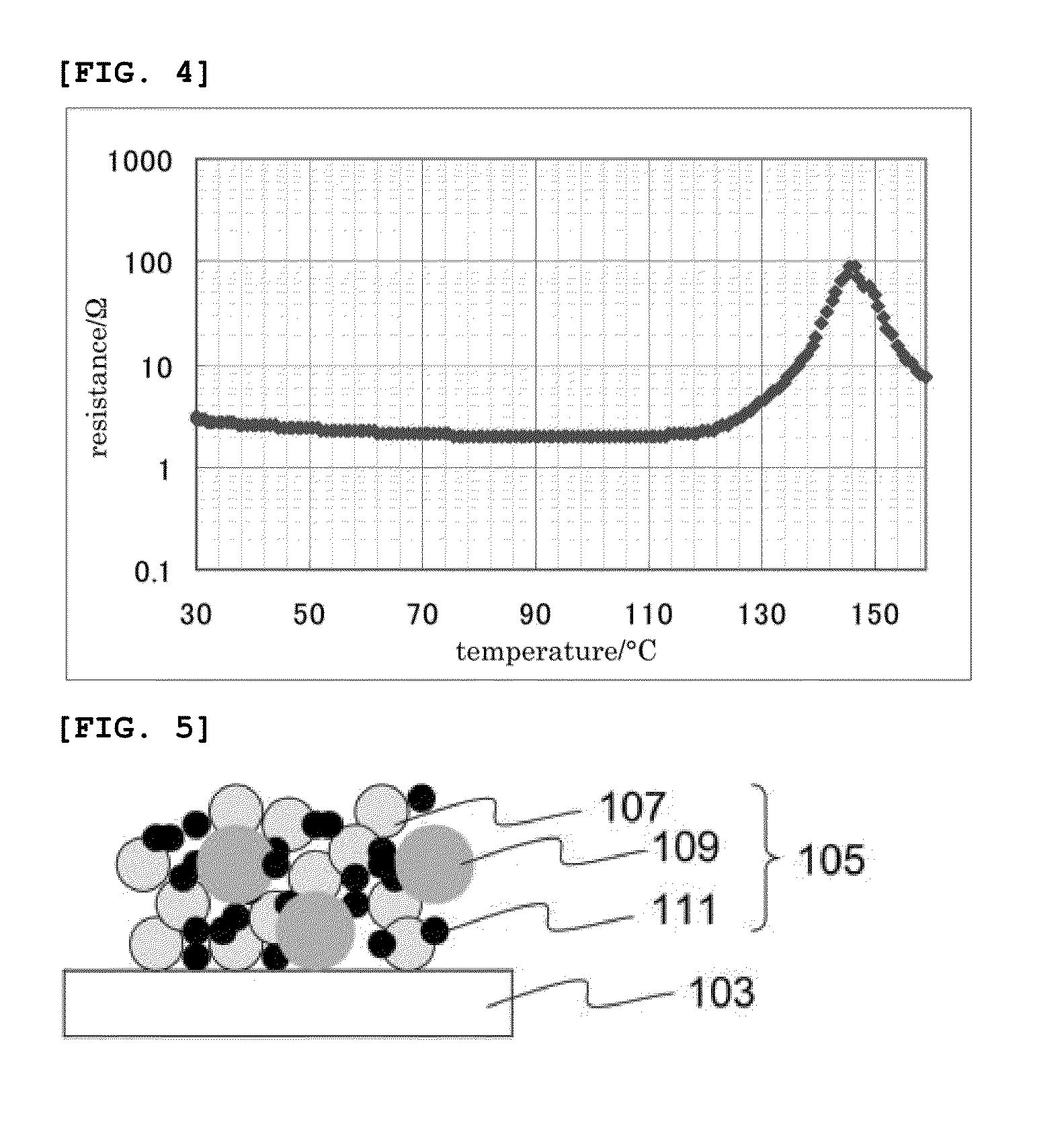Current collector, electrode, secondary battery, and capacitor
a current collector and capacitor technology, applied in the direction of positive temperature coefficient thermistors, cell components, batteries, etc., can solve the problems of increased inner pressure, high energy density, safety problems, etc., and achieve high efficiency, high efficiency, and high efficiency.
- Summary
- Abstract
- Description
- Claims
- Application Information
AI Technical Summary
Benefits of technology
Problems solved by technology
Method used
Image
Examples
embodiment
Current Collector Having Conductive Layer Added with Inorganic Non-Conductive Material
[0038]FIG. 1 is a cross-sectional view showing a structure of an electrode. In addition, FIG. 5 is a cross-sectional view showing the conductive layer of the electrode according to the present embodiment. The current collector 100 used in electrode 117 of the present embodiment comprises a metal foil 103, and a conductive layer 105 (thickness of 0.1 to 10 μm) formed on the surface of the metal foil 103. Electrode 117 of the present embodiment further comprises an active material layer 115 containing an active material, the active material layer 115 being provided on the conductive layer 105 of the current collector 100.
[0039]Here, as shown in FIG. 5, the conductive layer 105 comprises a conductive material 111, an inorganic non-conductive material 109, and a binder material 107.
[0040]FIGS. 6 and 7 are graphs for explaining a half width of the maximum exothermic peak observed with the binder materia...
example 1
[0091]Resin A (acid modified polypropylene emulsion, melting point of 138.6° C., solid content of 29.5%, number average particle diameter of 0.3 μm, and weight average molecular weight of 80000), acetylene black (hereinafter referred to as AB), and silica (colloidal silica, grain size of 450 nm, solid content of 40%) were mixed, followed by dispersion using disper, thereby obtaining a coating solution (resin A:AB:silica=85:10:5 by volume ratio, water medium). The coating solution thus obtained was coated onto A 1085 foil (thickness of 15 μm) so that the coating thickness would be 2 μm. The coating was then dried at 100° C. for 1 minute or 140° C. for 1 minute. Accordingly, a CC foil having a thickness of 2.2 μm was obtained. Here, the coatability of the emulsion of resin A with respect to the A 1085 foil was superior (no unevenness was found by visual observation with naked eye).
example 2
[0092]Resin A, AB, and silica (colloidal silica, grain size of 450 nm, solid content of 40%) were mixed, followed by dispersion using disper, thereby obtaining a coating solution (resin A:AB:silica=80:10:10 by volume ratio, water medium). The coating solution thus obtained was coated onto A 1085 foil (thickness of 15 μm) so that the coating thickness would be 2 μm. The coating was then dried at 100° C. for 1 minute or 140° C. for 1 minute. Accordingly, a CC foil having a thickness of 2.2 μm was obtained. Here, the coatability of the emulsion of resin A with respect to the A 1085 foil was superior (no unevenness was found by visual observation with naked eye).
PUM
| Property | Measurement | Unit |
|---|---|---|
| diameter | aaaaa | aaaaa |
| temperature | aaaaa | aaaaa |
| temperature | aaaaa | aaaaa |
Abstract
Description
Claims
Application Information
 Login to View More
Login to View More - R&D
- Intellectual Property
- Life Sciences
- Materials
- Tech Scout
- Unparalleled Data Quality
- Higher Quality Content
- 60% Fewer Hallucinations
Browse by: Latest US Patents, China's latest patents, Technical Efficacy Thesaurus, Application Domain, Technology Topic, Popular Technical Reports.
© 2025 PatSnap. All rights reserved.Legal|Privacy policy|Modern Slavery Act Transparency Statement|Sitemap|About US| Contact US: help@patsnap.com



